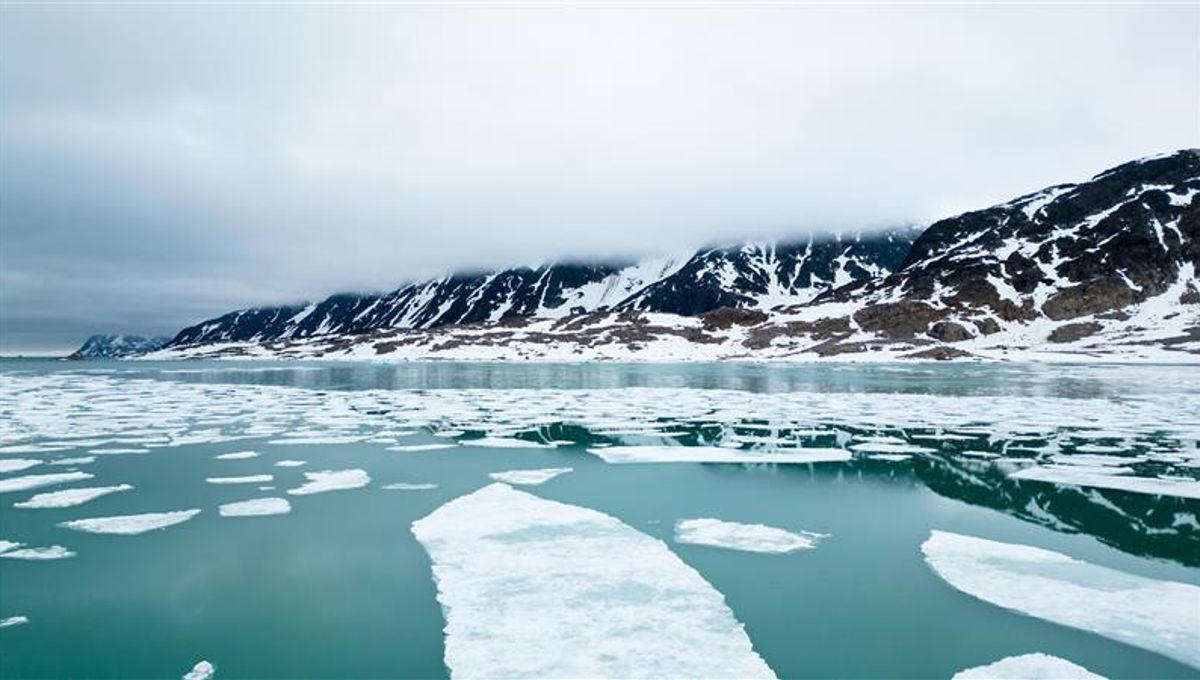
Deep beneath the permafrost on Svalbard, a Norwegian archipelago, a long-entombed threat is stirring. Although this may sound like the introduction to a horror movie, it is a reality that could have implications if it is ever released.
Under the ice, millions of cubic meters of methane are trapped, but scientists have learned that this gas can migrate beneath the cold seal of the permafrost and potentially escape. If a large-scale escape were to occur, it could create a cycle of warming where melting ice releases trapped gas, which then contributes to further melting. This would ultimately result in methane emissions soaring.
In addition, as Svalbard’s geological and glacial history is similar to the rest of the Arctic region, other migrating methane deposits are probably out there, waiting to escape.
“Methane is a potent greenhouse gas,” Dr Thomas Birchall of the University Center in Svalbard said in a statement. “At present, the leakage from below permafrost is very low, but factors such as glacial retreat and permafrost thawing may ‘lift the lid’ on this in the future.”
Icy imprisonment
Melting permafrost, a frozen layer on or under the ground that is constantly below 0°C (32°F), has received a lot of attention in recent years as its retreat reveals new aspects of our world’s ancient past. However, the loss of permafrost is a direct result of climate change, and is an alarming problem.
The permafrost on Svalbard is not uniform or continuous; there are areas, especially in the west, that are warmer due to ocean currents, and so there tends to be thinner or patchier areas. Also, permafrost in the highlands is drier and more permeable in contrast to the ice-saturated frost of the lowlands.
The rocks lying under this frozen layer are often fossil fuel sources that release methane, which is then trapped under this cold lid. However, new research shows that some geological features may allow the gas to escape.
The researchers used historical data collected by scientists and various commercial companies who, over the years, have bored holes into the permafrost in search of fossil fuel deposits. They used this information to map the permafrost across Svalbard and to pinpoint the methane gas accumulations.
“I and my supervisor Kim looked through a lot of the historical wellbore data in Svalbard,” said Birchall. “Kim noticed that one recurring theme kept coming up, and that was these gas accumulations at the base of the permafrost.”
When drilling into the frozen mud, the wellbores are often heated to help soften the process, but this can lead to distorted temperature measurements. However, observing the trend of temperature measurements and monitoring boreholes in the long term allowed the team to identify permafrost. They also kept an eye out for ice forming in the wellbore, changes in the drill cuttings produced while digging, and changes in the background gas measurements.
They found that there were gas influxes into the wellbore, suggesting the accumulation of methane in the permafrost, as well as abnormal pressure measurements indicating the ice served as a kind of seal.
But in other places, even where permafrost and underlying geological features were suitable for trapping gas and the rocks were known sources of hydrocarbons, there was no gas present. This, the team believe, shows the gas had already migrated elsewhere.
Interestingly, the gas accumulations were more common than previously thought. Of 18 hydrocarbon exploration wells drilled in Svalbard, eight showed signs of permafrost, and half of these struck gas accumulation.
“All the wells that encountered gas accumulations did so by coincidence – by contrast, hydrocarbon exploration wells that specifically target accumulations in more typical settings had a success rate far below 50 percent,” Birchall added.
“These things seem to be common. One anecdotal example is from a wellbore that was drilled recently near the airport in Longyearbyen. The drillers heard a bubbling sound coming from the well, so we decided to have a look, armed with rudimentary alarms designed for detecting explosive levels of methane – which were immediately triggered when we held them over the wellbore.”
The study is published in Frontiers in Earth Science.
Source Link: Methane Trapped In Permafrost Could Escape Its Icy Prison, Posing Climate Threat